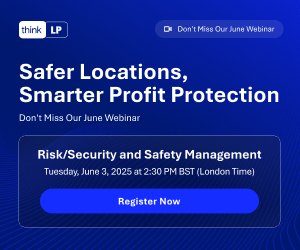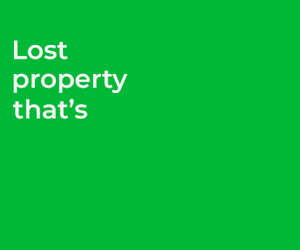industry focus
Why LP is going to the dogs
LP Magazine EU sniffs out examples of where man’s best friend is on the front paw of risk management as public law enforcement retreats from front line detection in favour of an increased role for so-called “private pooches.”
George Orwell’s allegorical fable Animal Farm first coined the phrase “four legs good, two legs bad” in what was a dystopian vision of a revolutionary society ruled by creatures that had thrown off the oppressive yoke of humankind. Although an extreme parable of the Russian revolution, there are direct parallels with our response to economic hardship. If necessity is the mother of invention, there are a number of dog-loving mothers in the world of crime fighting.
This is illustrated by the way the public expenditure axe has fallen across Europe’s law enforcement borders revealing that canines are not only clever crime fighters, but also often more cost-effective than their two-legged equivalents as Police forces contract in the services from accredited private sector specialist dog handlers on a needs-only basis.
Although this seems a cold and calculated view of the current scenario, there is great affection and admiration for the work of protection and detection dogs in fighting crime. For example, Zak—the 13-year-old springer spaniel Police dog that sniffed out more than €6 million worth of cash, firearms, and drugs and worked at events such as Glastonbury and the London 2012 Olympics—has just received a posthumous PDSA (People’s Dispensary for Sick Animals) Order of Merit, the canine equivalent of an OBE, a fact that goes to prove that you can teach an old dog new tricks.
Indeed, “man’s best friend” is not only displaying and performing more daring and audacious skills, but also stepping into the over-sized and financially over-stretched shoes of the emergency services as well as adding value to the world of the global corporations.
Their superhero talent is their sense of smell as their olfactory glands are 10 million times more powerful than those in humans, and in certain breeds (Labradors and Springer Spaniels in particular), their nose for the job is even more accurate.
Whereas traditionally dogs have been used passively and proactively for protection and detection, it is the latter skill set that has grabbed the headlines in cases where they have been trained to detect the most unusual contraband—from explosives, drugs, and cash to dead bodies (even those submerged in water), meat and dairy products, listening devices, plastics and rubber, and even terminal illnesses such as cancer before they have taken hold or been diagnosed. Also, beyond the world of law enforcement, the leisure industry including hotels, theatres, and airlines are employing dogs to detect bed bugs, those parasites that can make a customer’s journey or stay experience memorable for all the wrong reasons.
Up until around 2008, most Police forces ran fully staffed canine handling services, but cuts of up to 20 per cent across all UK forces and in Europe have seen those dogs and their handlers moved off the books into either early retirement or, increasingly, into the private sector.
It would be unfair to suggest that the move is without cost benefit justification for cash-strapped Police forces. Phillip Purpura, in his book Security and Loss Prevention: An Introduction, says, “In addition to the possibility of a lawsuit if a dog attacks someone, there are other disadvantages to the use of dogs. If proprietary dogs are part of the protection team, personnel and kennel facilities are needed to care for the dogs. These costs and others include the purchase of dogs and their training, medical care, and food. Another disadvantage is the possibility that dogs may be poisoned, anaesthetised, or killed. An offender may also befriend a dog. Using a contract service would probably be more feasible.”
There is often public disquiet when the private sector becomes involved in law enforcement, but in this instance there is a pragmatic acceptance, especially when the sector has become increasingly regulated. In short, dogs and their handlers are jumping through more legislative hoops to underline confidence in the service that they provide.
Steve Hill, secretary of NASDU (National Association of Security Dog Users) said that the regulations for dogs and the associated qualifications are now up to the same standards demanded by the National Police Chiefs Council (NPCC) with British Standard BS1157 and the Regulation of Investigatory Powers Act (RIPA) 2000 as the benchmarks. He said it was a continually evolving picture as canines are deployed in different ways.
“We have been developing standards to make sure handlers are compliant as new skills are developed. For example, we have qualifications for cadaver (dead body) detection dogs and even ones for where the bodies have been immersed in water. We have qualifications for dogs used in medical research and detecting bed bugs, which is huge in the US and used by hotels, theatres, and airlines.
“We are now developing a database for the Metropolitan Police so that they can see which dog security companies have the relevant qualifications, which is all part of the need for trust and confidence for forces that want to contract in those services as and when they need them.”
Such qualifications are essential when it comes to forces providing a transparent audit trail of their procurement decisions as the private market for dog handling companies proliferates as a result of the kind of adversity economics the public purse has been put through in recent years.
Dog Handlers in the LP and Risk Space
One company that is providing an international dog detection service beyond the Police is GSS (Global Support Services), which as the name suggests is working for companies with cross-border remits, including retailers with footholds in Europe.
“Our turnover has doubled year on year as clients are looking for rapid deployment and a quality and accredited service. Sixty per cent of our turnover is in the dog handling business, and 30 per cent of that figure sits in the retail space,” said GSS Managing Director Daniel Mailly.
“We can obviously provide dogs that can detect explosives and drugs in the workplace, but we have also trained dogs to detect very niche products, including one luxury car company that was losing hundreds of thousands of euros worth of stock as the ‘virgin’ or uncoded keys were being sold online for up to €4,500. We were able to train the dogs to detect the specific mix of leather, metal, and rubber in the unique composite of the keys, which resulted in them detecting the stolen keys in a locker at the manufacturer’s site.”
But it is not only crime that dogs are used to eliminate. Risk in its broadest and more philosophical sense is providing GSS with a developing role. Drug detection has always been a major part of the offering, and in the UK, for example, companies are getting tougher on employees who drive for business and are taking both legal and illegal substances.
This is because the law has just become more “prescription proscriptive” because from March 1 this year the Government drew up the list of sixteen drugs and their limited acceptable measures after deciding against a zero limit. This was due to certain medicinal drugs being able to be absorbed in the body and produce trace effects. They also didn’t want to risk penalising drivers for accidental exposure to drugs, such as inhaling cannabis smoke in a public place.
The illegal drugs on the list include: benzoylecgonine (cocaine), 50 micrograms per litre of blood (µg/L); cocaine, 10µg/L: delta-9-tetrahydrocannabinol (cannabis and cannabinol), 2µg/L; ketamine, 20µg/L; LSD, 1µg/L; methylamphetamine, 10µg/L; MDMA (ecstasy), 10µg/L; and heroin and diamorphine, 5µg/L. The legal drugs include: clonazepam (used to treat seizures and panic disorder), 50µg/L; diazepam (anti-anxiety), 550µg/L; flunitrazepam (Rohypnol, a sedative), 300µg/L; lorazepam (anti-anxiety), 100µg/L; methadone (heroin substitute), 500µg/L; morphine (pain reliever), 80µg/L; oxazepam (anti-anxiety), 300µg/L; and temazepam (anti-anxiety and sedative), 1,000µg/L.
There are of course penalties if a driver is convicted of drug driving. These include a minimum one-year driving ban, a fine up to £5,000, and the obligatory criminal record, which your licence will display for eleven years. It also means that drivers may not be able to get car insurance; Admiral, and its sister companies, for example, will not cover anyone who has been found guilty of a drug-driving offence and conviction may impact travelling to certain countries, such as the USA.
In essence, this is providing more work for the dogs that are being used as much in health and safety as in crime prevention roles. But what about when those substances are so-called “legal highs” and not included in the Government-defined list of substances? This is another grey area; although technically no criminal offence has been committed, Mailly says the effects of such drugs are unpredictable and give retailers greater cause for concern. So much so that many are introducing blanket bans on all unprescribed substances and medication because of the impact they have on users.
“This is a real unknown area because these substances are legal. However, with legal highs such as ‘China White’ the effects are akin to taking cocaine, and users do not know how potent it can be. The results are often devastating and create real health and safety issues in the workplace.
“Our services have been used by many international companies to identify legal highs as part of a broader educational piece to show staff that the effects are far from harmless.”
Customer Reassurance
Another use of the dogs has been for protection and visible deterrent in retail car parks where many Eastern Europeans congregate and offer their wares to customers as they come out of the stores to their cars.
Daniel Mailly added, “This activity is not illegal, but it is brand damaging for many retailers as the car parks are attracting a lot of people who congregate and create a sense of discomfort and intimidation, although they appear to be trying to want to help shoppers in return for a tip.
There was one incident when a man approached a young mother in a car, ostensibly to help her. He opened the rear door and tried to get her child out of a car seat, which was obviously terrifying for the woman. Also, many of the people congregating should not have been there for other reasons. Working with the UK Borders Agency (recently replaced by UK Visas and Immigration), a recent investigation revealed that one third of the people in the car park were illegal, and they were taken in for questioning.
“In these instances, a dog and handler can help to provide a sense of a safe zone,” he said.
Retailers are also investing more into the services of companies such as GSS because of its RIPA, ACS, and SIA compliant intelligence gathering capability, either with or without the use of dogs.
“As a global company, we have current reach into France, Germany, Norway, and Ireland, and also into Eastern Europe where the issues are more intense. Retailers are often frustrated because Police make arrests but charge offenders with individual shop-theft offences rather than build the bigger, organised crime picture. We know through our intelligence that these are very organised gangs who are also involved in more serious crimes such as people trafficking across borders and drugs. We build cases and then pass it on to Police as a credible way of filling the intelligence void.”
European Initiative
In Germany, dogs are being use to detect forged euro notes, a criminal problem that has caused the federal authorities a major headache in recent years.
Paper to print currency is made from cotton and linen, rather than wood pulp, and euro notes are all-cotton. The sniffer dogs react to the ink used to print the notes, though central banks keep the exact composition of their legal tender a closely guarded secret.
More than ten specially trained currency-detection dogs are used in Germany, with as many as four employed in Frankfurt, alone, according to Bernd Roessler, a spokesman for the federal finance office.
While dogs have been used to sniff out drugs for more than forty years, training them to detect cash being carried is more complex and has only existed since 2010.
“Our dogs are trained to sniff for bundles containing 1,000 individual notes or more, and after learning the character of a smell, they can recall it for as long as four months,” said Uwe Wittenberg, who heads up the dog squad at Frankfurt Airport and who also trains the dogs to detect smuggled euro and dollar notes in luggage.
Recent cases surrounding bank secrecy means that individuals wanting to move more than €10,000 euros in cash must declare it at customs, and those that don’t have fallen foul of the federal hounds who sniff out the cash contraband.
This has proved extremely effective, with equivalents seized in the first six months topping amounts collected in every calendar year since 2003, according to data provided by the customs office. Criminal investigation proceedings on money laundering stood at seventy-eight cases in Germany last year, the highest in eight years.
In short the dogs are seen as the last line of defence while European leaders work on a pact designed to share data on income earned abroad among its twenty-eight member states, tightening rules and closing loopholes for tax evaders. Separately, anti-tax-evasion discussions with non-EU members—including Switzerland, Liechtenstein, Andorra, San Marino, and Monaco—are under way.
The German states of North Rhine-Westphalia and Rhineland-Palatinate have bought data on bank accounts of possible tax evaders, putting pressure on Germans with money banked abroad. Amnesties are offered to anyone who voluntarily turns themselves in for money smuggling or laundering before the dogs have sniffed out their wrongdoing. But once a probe has been opened, often after the dogs have been unleashed, an offender can no longer surrender with impunity.
German federal states received more than 8,300 requests for amnesty in 2013, pushing the total to more than 36,000 since 2010, data provided by the states’ finance ministries show. North Rhine-Westphalia and Baden-Wuerttemberg alone collected more than €1 billion combined through amnesty cases.
“The main reason for this trend surely is the fact that the risk of getting found out has increased,” said Stienke Kalbfuss, a spokeswoman for Saarland’s finance ministry.
Those who take chances and try to bring their money home face the risk of a canine confrontation at the border. In Frankfurt, sniffer dogs need no more than fifteen minutes to check around 300 pieces of luggage (a typical airplane load) for smuggled goods. The animals then take a thirty-minute rest break and can work as many as eight jets during a shift.
Dogs seeking cash usually undertake fewer checks. While training for the character of a smell takes only five weeks, detecting cash is much harder for the animals than sniffing for cocaine or explosives as the smell of money varies more.
As exposed evaders are forced to forego money intended for their comfortable sunset years, the dogs are rewarded with a cosy retirement. After a decade of service, they move in with their handler, with the Government covering food and veterinary expenses for their twilight years removed from sniffing.
So there is no shortage of demand for the forensic accuracy of cash dogs in northern Europe. One customs official compared his canine crusaders to a luxury brand German vehicle.
“If your dog at home that can do some tricks, it is the equivalent to a bicycle, while our dog is a Porsche,” said Marc Behre, a spokesman for the Bremen customs office, which also has a German Shepherd dog trained for cash. “We use only the best.”
So it is a dog’s life across a broad range of criminal investigations with the promise of greater convictions and rewards, a fact fuelled by cost savings, adversity, and loyalty, and where four legs are often seen as better than two.






